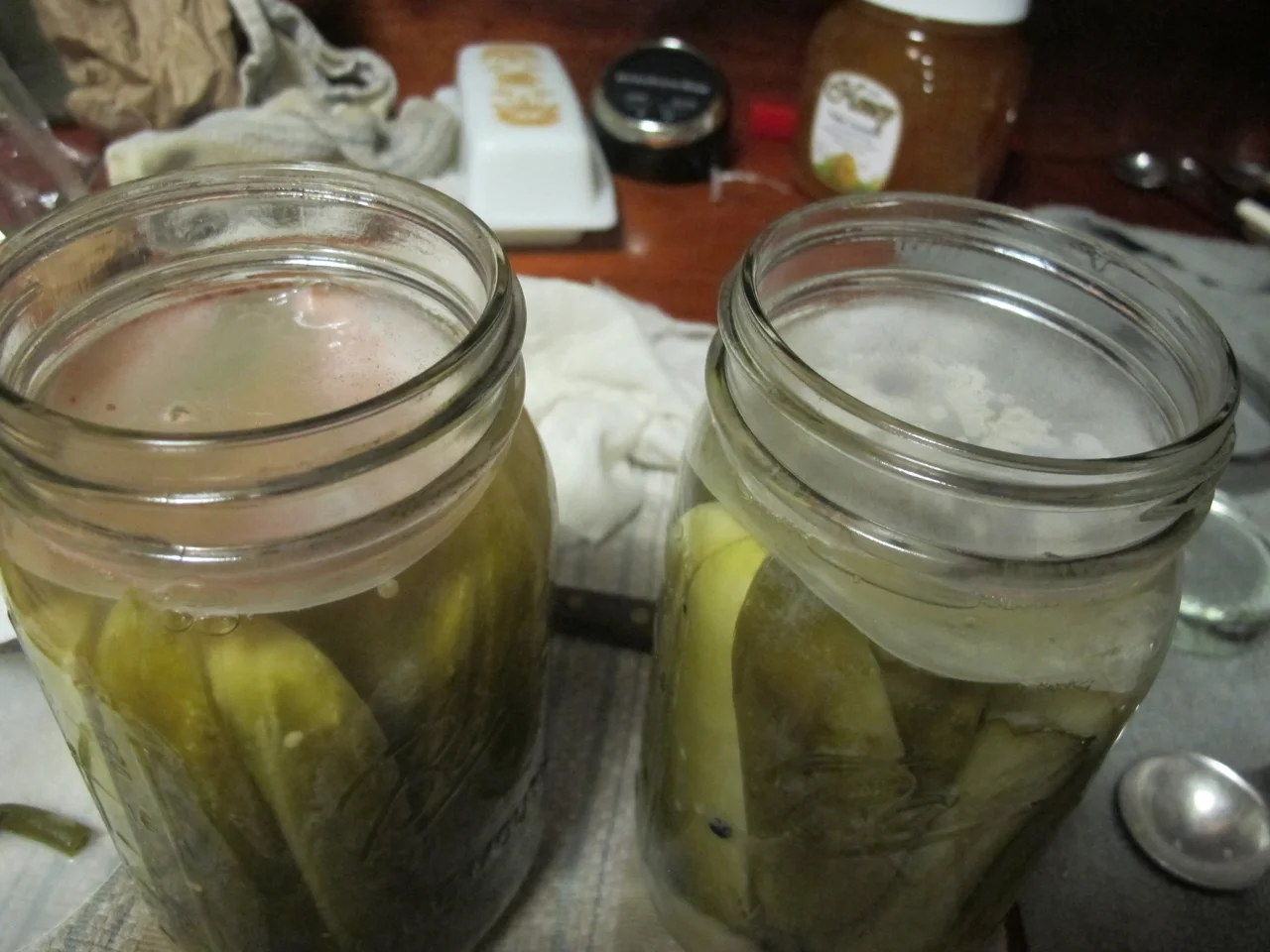Hi Kirsten,
Thanks so much for this wonderfully helpful page!
I've been fermenting these dill pickles for almost two weeks. They are fully submerged under the brine but when I opened them today, they had fuzzy mold (one a bit pinkish) growing all over the surface. I had already, earlier in the fermenting process, scraped off a white film from the top, as well as pulled out some goopy clumps floating near the top, almost like egg white, but more whitish.
I've read conflicting things. Some say just scrape the mold off and it is fine. Others say that if true mold has formed, it has thrown roots/spores all throughout the container and the whole thing is contaminated.
I just hate the idea of composting all these pickles. But I'm also terrified of eating and feeding to my family something that might make us unwell.
Thanks so much for your help!
Deborah
____________
Good Morning Deborah,
You do have a fine case of mold. ;-)
While it definitely a concerning color, etc. the good news is I think since you have that follower in place underneath and your pickles are well under that they are likely salvageable.
First on the mold, I have always scooped off the mold and then a little as from my research the mold hyphae are not invisible any more than yeasts are. They are made up of large nucleated cells and so their threadlike structures are strong enough to make meshes, films or strings. And it looks like you have a mesh or mat on top of your ferment. Hyphae mats have the texture of fine leather. This is distinct from the cloudiness of bacteria.
Most importantly molds are surface feeders.
Here is the more information than you want part.
They digest plant polysaccharides by secreting enzymes that hydrolyze the solid plant material into smaller fragments that are absorbed by the hyphae. The hyphae do not release enzymes into surrounding liquids, because they would just be producing food for bacteria. The hyphae grow onto the surface of the food and the enzymes are only released into/localized by the surrounding material. The air-water interface is another surface that can be colonized. The hyphae can also grow as a mat of intertwined hyphae that traps water that can be treated with enzymes. Some of the enzymes will leach out, but that is a loss/expense for the fungi. The point is that the hyphae can grow as a surface contaminant, but the hyphae do not extend deeply from the surface, because the fermenting environment of low pH and low oxygen prevents the growth of the hyphae. The column of carbon dioxide trapped above the surface also limits oxygen access.*
Here is the what to do part.
Scoop off the mold carefully as carefully as you can without disturbing the pickles below (like I said this is where having that follower is GREAT!) Also remove as much as that top brine as you can.
Wipe the edges of the jar with a clean cloth or paper towel.
When you are confident that things look clean—pull out a pickle. My sense is it will be just fine. Smell it it will will smell moldy if it is. If not you can taste it. Really! If you taste mold or anything feels off than I would say compost that batch. If it is fine then you can refrigerate the pickles. You will likely have to add a fresh bit of salt brine to make sure that they are fully submerged again.
Oh and one last thought, I personally only ferment cucumbers for 6 days. It retains the crisp and as the continue to age in the refrigerator they will still keep fermenting. This shorter time also minimizes a moldy bloom.
Hope that helps.
All best,
Kirsten
* Thanks to Dr. Art Ayers for explaining this to me. (http://coolinginflammation.blogspot.com/)

